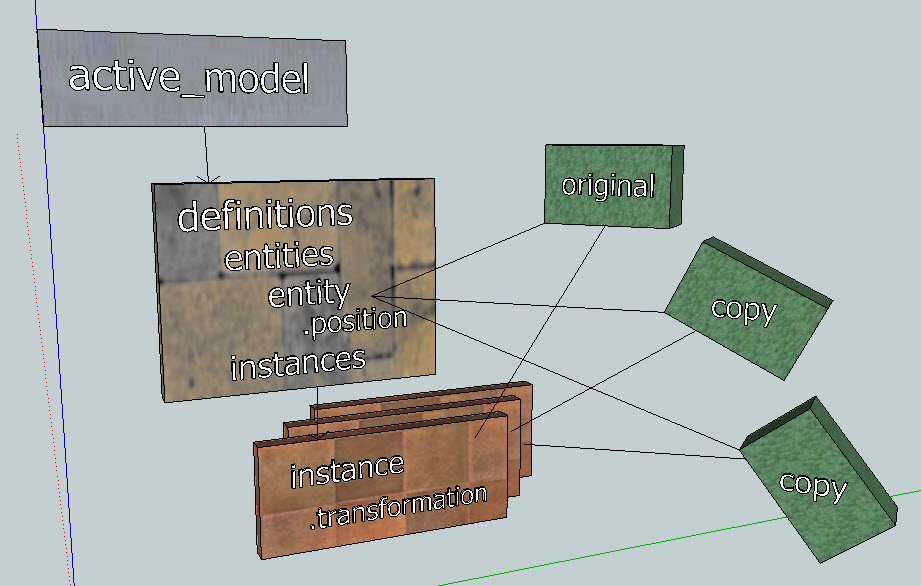@gbabcock said:
From there you can walk UP the hierarchy of ComponentInstances
Well, not quite... 
The Parent of a ComponentInstance is a ComponentDefinition, which can exist in more than one ComponentInstance (for example, if you have multiple instances of a Component that has nested Components). So you can't even walk up the hierarchy of ComponentInstances. 
But walking down works well! My use case is where I have selected a Group/Component (but not opened it) and need the global position of every Vertex. With limited testing performed, this code seems to give an accurate position report:
#get vertices
def Start
#get vertices
verts=[] #initialize vertices array
trans_h=[] #initialize transformation array use to store hierarchy of transformations
verts=createVerticesArray(sel,trans_h,verts)
end
def createVerticesArray(sel,trans_h,verts)
sel.each{|ent|
if (ent.is_a? Sketchup;;Group) || (ent.is_a? Sketchup;;ComponentInstance)
trans_h.push(ent.transformation) #push the Group/Component tranformation onto the array
ents=ent.definition.entities #get the entities in this Group/Component instance
verts=createVerticesArray(ents, trans_h, verts) #recurse
elsif (ent.is_a? Sketchup;;Edge)
ent.vertices.each{|vert| #begin analysis of vertices in this edge
puts vert if @debugFFD
#get global position of the vertex by applying the hierarchy of transformations
v_gpos=vert.position #returns local Point3d position of vertex
puts v_gpos if @debugFFD
flat_t=flatten(trans_h) #get the flattened transformation for the hierarchy
puts flat_t if @debugFFD
v_gpos.transform! flat_t #transform the vertex to get the global position
vert.set_attribute("vert","gpos",v_gpos)
verts.push(vert)
}
end
}
#verts now contains redundant verts. remove duplicates.
verts.uniq!
return verts
end
#thanks to Adam for the idea!
def flatten(trans_h) #returns a flattened transformation from an array of transformations for the instance hierarchy
flat_t=Geom;;Transformation.new #create an entity transformation object
#apply the hierarchy of transformations to the entity transformation
trans_h.each{|t|
flat_t=flat_t* t
}
return flat_t
end
It performs well too, though I'm sure it could be improved. I have used it on a component with ~8400 entities and 1720 vertices, and get the results back in 0.25 seconds consistently.
Glenn
 Let me sum it up to make sure.
Let me sum it up to make sure.
 .
.